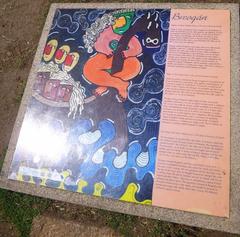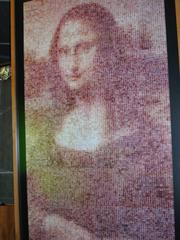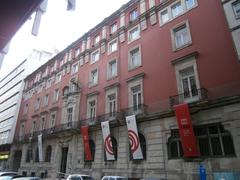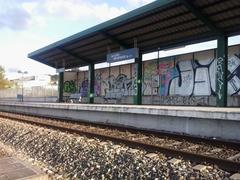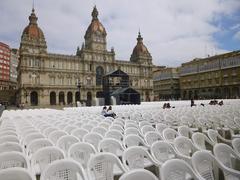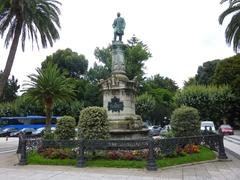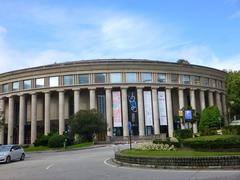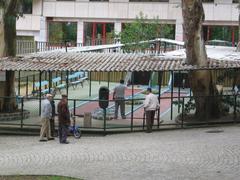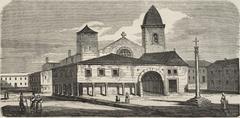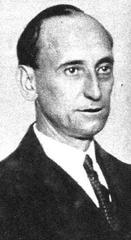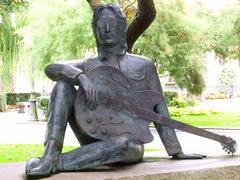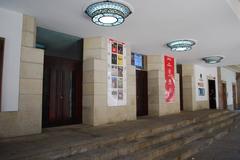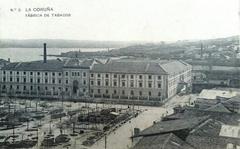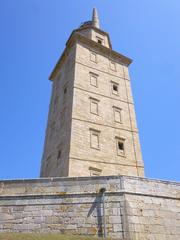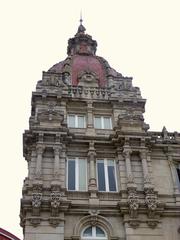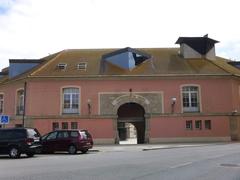Praza de Santa Bárbara A Coruña: Visiting Hours, Tickets, and Travel Guide
Date: 04/07/2025
Introduction
Praza de Santa Bárbara, located in the heart of A Coruña’s Cidade Vella (Old Town), is a captivating historical square that seamlessly weaves together centuries of religious heritage, architectural artistry, and Galician cultural traditions. Once the site of a medieval hermitage dedicated to Saint Barbara, it evolved into the Convent of the Poor Clares in the 15th century, leaving a lasting imprint on the area’s tranquil atmosphere and distinctive architecture (Concello da Coruña). Featuring a rare 14th-century Gothic relief of the Last Judgment and enveloped by granite buildings with traditional wooden balconies, the square is a living testimony to A Coruña’s medieval fabric and spiritual legacy (Galician Wikipedia).
Accessible year-round and free to enter, Praza de Santa Bárbara offers visitors a peaceful retreat and a gateway to explore the city’s rich past. This comprehensive guide provides a detailed overview of its origins, architectural highlights, cultural role, practical visiting information, and nearby attractions—making it an essential resource for those seeking an authentic Galician experience (visitcoruna.com, explorial.com, spain.info).
Table of Contents
- Introduction
- Medieval Origins and Evolution
- Architectural and Artistic Heritage
- Social and Urban Significance
- Practical Visiting Information
- Cultural Recognition and Preservation
- The Living Legacy of the Convent
- Frequently Asked Questions (FAQ)
- Conclusion
- Visuals and Interactive Elements
- References
Medieval Origins and Evolution
Praza de Santa Bárbara’s story begins with a humble hermitage devoted to Saint Barbara, a revered protector in Christian tradition (Concello da Coruña). By the 15th century, the hermitage gave way to the Convent of the Poor Clares, a cloistered order whose presence defined the square’s character and role in the city. The convent quickly became a center for spiritual life and community support, maintaining these traditions for over five centuries.
Architectural and Artistic Heritage
The Gothic Relief and Convent Complex
The most striking artistic feature of the square is the 14th-century Gothic relief above the convent’s entrance, depicting the Last Judgment with vivid symbolism. This rare medieval artwork showcases the Holy Trinity and the Archangel Michael weighing souls, surrounded by celestial motifs—a testament to the site’s religious and artistic significance (Galician Wikipedia).
The surrounding granite buildings, adorned with traditional Galician wooden balconies, exemplify the region’s pragmatic yet elegant architectural style. Dominating the square is the stone cruceiro, a quintessential Galician wayside cross, and the convent’s austere facades, which reflect both monastic values and historical continuity (visitcoruna.com).
Social and Urban Significance
Praza de Santa Bárbara’s design reflects its origins as a monastic enclave—a quiet, tree-shaded square bordered by convent walls and granite townhouses. The cruceiro stands at the center, anchoring the square in Galician tradition. Historically, the square served as a hub for charitable activities and gatherings, with the Poor Clares known for producing traditional sweets—a culinary practice that endures today (Turismo de Galicia).
The square continues to play an important role in local life, hosting small cultural events, open-air concerts, and religious processions, especially during the feast day of Saint Barbara.
Practical Visiting Information
Visiting Hours
The square is a public space, open 24 hours a day, year-round. Entry is free. The convent itself is cloistered and not generally open for public visits, except during special events.
Tickets and Guided Tours
No ticket is required to access the square. Guided walking tours that include Praza de Santa Bárbara are available through local tour operators and may provide historical context and insights into the convent’s exterior and the area’s significance.
Accessibility
The square’s cobblestone paving adds to its charm but may be challenging for visitors with mobility issues. The area is pedestrian-friendly, though some uneven surfaces are typical of historic districts.
Special Events
Praza de Santa Bárbara is a focal point during local festivals, such as the August María Pita festivities and religious celebrations like Holy Week and “La Noche de San Juan.” These events bring music, processions, and community gatherings to the square (explorial.com).
Nearby Attractions
Praza de Santa Bárbara is well-situated for exploring other landmarks:
- Colexiata de Santa María do Campo: A Romanesque church with a religious art museum (spain.info).
- Praza de María Pita: The city’s main square, home to the Town Hall and a monument to María Pita.
- Xardíns de San Carlos: Historic gardens with panoramic views and the tomb of Sir John Moore.
- Castelo de San Antón: A 16th-century fortress and archaeological museum.
- Museo de Bellas Artes: Fine arts museum with Galician and Spanish works (Museo de Bellas Artes da Coruña).
Cultural Recognition and Preservation
Praza de Santa Bárbara was declared a “conxunto histórico-artístico” (historic-artistic ensemble) in 1971, ensuring the protection and conservation of its unique architectural and cultural heritage (Galician Wikipedia).
The Living Legacy of the Convent
The Convent of the Poor Clares remains an active religious community. Although the cloistered spaces are not open to the public, visitors can support the community by purchasing handmade sweets, such as traditional “cocadas.” This longstanding practice connects visitors to centuries-old Galician culinary heritage (Turismo de Galicia).
Frequently Asked Questions (FAQ)
Q: What are the visiting hours for Praza de Santa Bárbara?
A: The square is open 24/7 year-round. The convent is not open for general public tours.
Q: Is there an entrance fee or tickets required?
A: No tickets or fees are required to visit the square.
Q: Are guided tours available?
A: Yes, local tour operators often include the square in Old Town historical tours.
Q: Is Praza de Santa Bárbara wheelchair accessible?
A: The cobblestone streets may pose challenges for some visitors, but the square is generally accessible.
Q: Can I buy souvenirs or local products there?
A: Yes, the convent sells handmade sweets such as cocadas.
Conclusion
Praza de Santa Bárbara is both a serene retreat and a vibrant cultural landmark in A Coruña’s Old Town. Its medieval origins, artistic treasures, living monastic traditions, and role in community events make it an essential stop for those seeking to connect with Galicia’s heritage. Whether admiring the Gothic reliefs, enjoying the shade of acacia trees, or sampling convent sweets, visitors are invited to experience the heart of A Coruña’s history.
For the latest updates, event schedules, and visitor information, consult official tourism resources and consider downloading the Audiala app for curated audio tours and insider tips.
Visuals and Interactive Elements
-
Images:
- Photograph of Praza de Santa Bárbara showing the stone cruceiro and flower-adorned balconies (alt=“Praza de Santa Bárbara historic square with cruceiro in A Coruña”).
- Image of the Convento de Santa Bárbara entrance featuring the Gothic Last Judgment relief (alt=“Gothic relief above Convento de Santa Bárbara entrance in A Coruña”).
-
Map:
- Embedded interactive map highlighting Praza de Santa Bárbara and nearby attractions.
-
Virtual Tour:
- Link to a virtual walking tour of A Coruña’s Old Town, including Praza de Santa Bárbara.
References
- Praza de Santa Bárbara in A Coruña: History, Visiting Information, and Cultural Significance, 2025, Concello da Coruña
- Praza de Santa Bárbara in A Coruña: History, Visiting Hours, Tickets & Cultural Significance, 2025, visitcoruna.com
- Praza de Santa Bárbara in A Coruña, 2025, Galician Wikipedia
- Praza de Santa Bárbara Visiting Hours, Tickets & Guide to A Coruña’s Historic Square, 2025, explorial.com
- Praza de Santa Bárbara, 2025, spain.info


